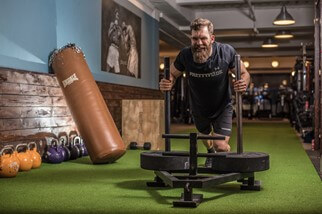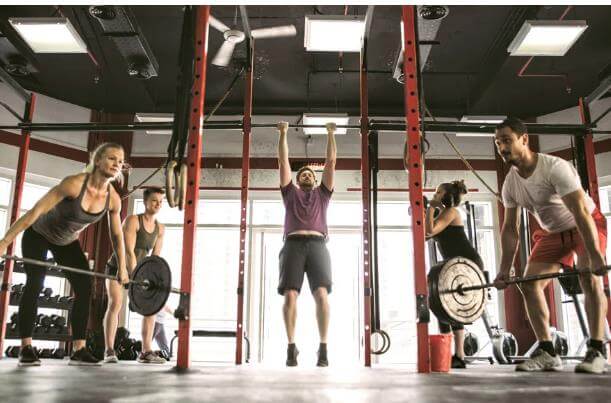The importance of exercise in our daily lives is indisputable. From boosting heart health to enhancing cognitive function, physical activity offers numerous benefits to improve both physical and mental well-being. Unfortunately, there remains a lot of confusion surrounding the suggested “frequencies” associated with exercise and the right balance one should have for optimal health.
Should we be doing more or less? This can be especially difficult to understand, as we are bombarded by so much conflicting information from mass media and popular belief. This blog post will aim to ‘clear the air’ and shed light on understanding optimal frequency requirements for exercise so that you can get the maximum benefit without risking any undesirable side effects.
We will discuss why it’s beneficial to keep your body “in shape,” the importance of finding an exercise regimen tailored to your individual needs, and debunk some common myths about how often you should work out.
So let’s start understanding what exactly makes up a well-rounded exercise routine that works best for everyone’s personal data – after all, if it fits you like a glove, then who says no?
Defining Exercise Frequency, Volume & Intensity

Before delving into recommendations for exercise frequency, it’s important to explain what factors contribute to the term and how they relate to each other. Exercise frequency is the number of times an individual exercises within a certain time span usually one week or one month. It is the rate at which they tend to hit the gym, run around their neighborhood, or engage in other forms of physical activity on a routine basis.
The volume of exercise per session is the amount of duration spent within that timeframe and refers to how long someone works out each time. Lastly, intensity denotes how hard someone works out at any given point and can be influenced by things like speed, resistance, and weight lifted. All three components form an essential role when determining one’s overall workout program.
Explaining the Relationship Between Factors

Once all three components are understood—frequency, volume, and intensity—it’s easier to see the direct relationship between them: if you increase your exercise frequency then your workload increases exponentially as you’ll have a larger total volume across multiple days; if you decrease exercise frequency but increase your total output during sessions then intensity gets increased but only for that specific occasion; likewise, if you reduce workout duration then the intensity will naturally drop but allow for more time-efficient training routines.
Understanding these behaviors should give people an idea of where they should position themselves regarding workout regimen and it’ll be helpful when attempting to tailor a plan that caters exactly to their needs as well as lifestyle constraints most efficiently without sacrificing health goals (or worse sustaining unnecessary injury).
Research On Optimal Exercise Frequency Recommendations

Nowadays scientists heavily emphasize having some form of regular physical activity in order to stay healthy and live longer since
research
indicates that those who do regular exercise tend to have lower mortality rates due to lack of risk of developing cardiovascular diseases and type 2 diabetes in comparison with more sedentary individuals.
Also, older adults specifically benefit from ensuring they get enough activity based on prior
studies
, being advised that 150 minutes/week divided into moderate-intensity aerobic activities helps promote better functional outcomes in the musculoskeletal system thereby limiting disability experienced by older age (people 65 years over recommended).
Not only has aerobic training proven
beneficial to brain health
in elders but also
maintained
the ability to perform strength work due to improving circulation rate contributing to restoring the functionality of muscular tissue, hence further bolstering results reached via aerobic activities.
Personalizing Your Exercise Routine

When it comes to exercise, it is important to remember that different people will have their own unique needs. Factors like age, fitness level, personal goals, and health conditions can all impact the type of routine an individual should implement and how often they need to do it. As such, individuals should strive to find balance through experimentation and listening carefully to their own bodies; adjusting as needed in order to optimize their results and stay healthy over time.
For example, those new to exercise may have difficulty understanding the basics of establishing a routine due to a lack of physical activity knowledge. To remedy this obstacle one should start off by getting a basic understanding of the core pillars behind working out regularly from
reputable sources
or even better sign up for a personal training session where professional advice given likely be tailored to exactly each individual needs than what’s seen as “standard guidelines” for general population treadmill implementation does not yield optimal outcomes since the majority does not take into account specific conditions person trying to achieve sudden (weight loss, etc).

Another strategy could involve experimenting with different types of movements at various intensities based on one’s own body’s feedback markers such as perceived exertion (the rate you feel strain), and heart rate measured post-workout (knowing peak intensity reached) among other physiological variables that’ll give clear indication someone not pushing too hard nor being understimulated when they prepare hit gym floor next time round.
That being said this experimentation part shouldn’t guarantee jumping straight into intense
HIIT routines
ever decided to incorporate them user’s own accord without proper guidance sure get injured easily if taking the escalator (instead of stairs): always prioritize building a solid foundation first then gradually move challenging exercises making fine adjustments along the way finally reaching point able perform tasks required goal (running marathons, completing Ironman races, etc).
The Power of Diverse Workouts

One of the most common misconceptions about exercise frequency is that one type of movement is all it takes to attain a desired goal. However, research has found that aside from consistency, having a mix of low-intensity, moderate-intensity, and high-intensity movements can offer greater health benefits than focusing on just one form of exercise.
For example, when it comes to cardiovascular fitness short sprints combined with long-distance runs will work as an ideal training regimen for weight loss/maintenance or improved endurance capacity; especially when considering individuals who are looking to build both aerobic and strength which pairing heavy resistance exercises lighter endurance ones help build balanced body after time.
At the same time, proper recovery workouts weighted towards stretching/foam rolling utilized post-strenuous activities (see
here
for more info) greatly ensuring prevention of injury while reducing risk exposure to commonly faced aches and strains during extended periods of intense routines allowing stay peak condition despite not taking a day off.
As a result, mixing up workout types gives the opportunity participants to look at the entire picture versus single facet process and engage dynamic processes like progressive overload systematic way; making the leap towards establishing lifetime habits of physical activity much easier rather than trying to go all out every session increase odds sticking healthy lifestyle routine as oppose simply fast-tracking progress due fear stagnation likely occur soon plateau aim longer-term commitment rather than short burst gains susceptible fading away quickly.
Rest & Recovery: Unsung Heroes of Exercise

With all that being said perhaps an underappreciated side of exercise frequency is its emphasis on rest recovery, a key component often overlooked yet equally critical none matters other entity is regarded as a health matter.
Rest days or active recovery
aids
repair damaged tissues strengthening muscles to gain progress. This means you should not just lie at home on the couch all day long. The best option on a non-workout day is to find optimal activities like walking, hiking, yoga, etc.
Similarly, consistent naps help stimulate the central nervous system to recharge batteries post-workout so possible keep going with hardcore routines also gives better focus overall thought process might sound easier to attain it’s actually quite difficult to stop working/training too much which is why recognition importance rest deserves nod when discussing balanced approach healthy living backing up intrinsic qualities underlying strategic plan great deal success can achieve this manner well.
Tips for Staying Consistent and Motivated
Sticking to an exercise program can often be difficult, so it’s important that individuals identify ways that they can stay motivated and accountable. Here are a few tips to help keep you on track with your fitness goals:
1. Set aside a designated day or time each week (or month) to work out – even if it’s only 15 minutes. Make sure you set realistic expectations so it doesn’t become overwhelming.
2. Break up your workouts throughout the day – if you’re short on time, break it down in small chunks like running for 5 minutes during lunch or going for a quick walk after dinner.
3. Use motivational tools like playing
upbeat music
during intervals to get you pumped up, watching inspiring fitness videos on YouTube before heading out, or writing down small daily mantras as reminders to stay committed.
4. Try integrating activities like sports or dance classes that involve socializing which might make working out less of a chore and more enjoyable!
5. Finally, reward yourself with something small when you reach milestones – this way you can track your progress and create positive associations with exercising over time!
Key Takeaways
To sum up, exercise frequency is an important part of achieving optimal health outcomes. Individuals should consider their own lifestyle needs when developing a plan of action tailored specifically for them; factoring age, level of fitness, personal goals, and health conditions influencing type routine duration intensity respectively optimizing results and reaching desired objectives within the shortest time scale possible. By incorporating diverse forms of movements and adding rest days recovery sessions continue same vein providing the most comprehensive holistic approach all around helping unlock potential taking advantage of self-care measures allowing stay in top shape in all situations life throws otherwise risky scenarios may present themselves getting better such situation itself roundoff method dealing instances hardship face inevitable eventualities success transitioning unknown amount progress fostered healthy outlook life obtaining results faster due newfound appreciation body capabilities presence stronger community safe encouraging environment motivates others similar ideologies continue growing realization unbreakable bond shared between physical activity nutrition positive vibes train community making sure everyone has fair chance join ride without limits.

 By myulikeadmin
By myulikeadmin



